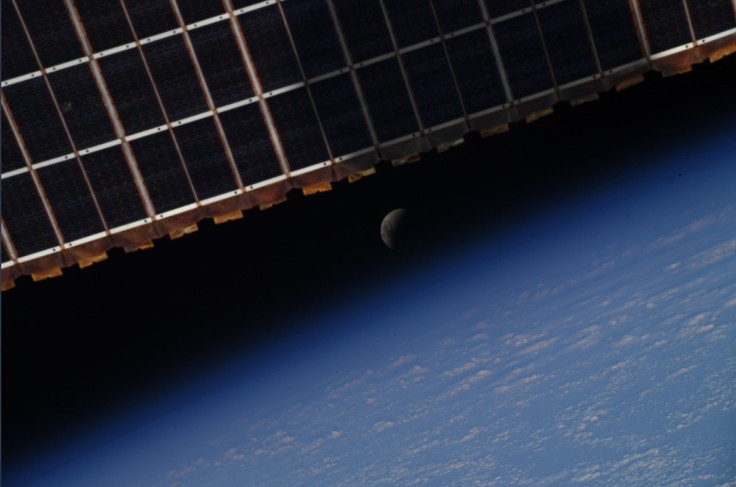Have you ever wondered what a lunar eclipse looks like in outer space? If so, well, I have good news for you!
A European astronaut just posted pictures of the most recent lunar eclipse while in the International Space Station.
Find out below how spectacular the astronauts' view on the first lunar eclipse of the year.

Super Flower Blood Moon Lunar Eclipse Captured While at the International Space Station
Samantha Cristoforetti, a European astronaut, tweeted many photos of the Super Flower Blood Moon lunar eclipse, framed by space station equipment and with a cloud-covered Earth below.
Happy Monday from space! Were you lucky enough to be able to see the lunar eclipse last night? We were! / Buon lunedì dallo spazio! Avete avuto la fortuna di vedere l'eclissi lunare di ieri sera? Noi sì! 🌘#lunareclipse2022 #MissionMinerva #LunarEclipse pic.twitter.com/RKJ49L4YAX
— Samantha Cristoforetti (@AstroSamantha) May 16, 2022
According to Space.com, the astronauts aboard the International Space Station most likely saw numerous rounds of the scene because the International Space Station orbits Earth every 90 minutes. The total eclipse, which began at 9:32 p.m. EDT on May 15, lasted 85 minutes, the longest in 33 years, when the moon was entirely covered by the umbra, the planet's dark shadow. The moon does not disappear from the sky during a total eclipse; instead, it appears red due to light scattering by Earth's atmosphere. The term "blood moon" is widely used to describe the fully eclipsed moon because of this effect. Cristoforetti's photographs depict the darkened moon as seen through the solar panels of the space station.
A partially eclipsed Moon playing hide-and-seek with our solar panel. / Eclissi parziale della luna che gioca a nascondino con il nostro pannello solare. 🌘 #lunareclipse2022 #BloodMoon #MissionMinerva pic.twitter.com/P7oYFcfTdA
— Samantha Cristoforetti (@AstroSamantha) May 16, 2022
What Is 'Flower Moon' Lunar Eclipse
As we have previously reported (via Space.com), the term "flower moon" refers to the flowers that bloom around the full moon in May in North America.
A total solar eclipse would be seen from the moon, with the Earth totally blocking the sun. The Earth's atmosphere causes the "blood moon" effect as the Earth's edge would be a vibrant red-orange.
Because the moon is dimmed during an eclipse, it's easier to see the constellations it's in, like Libra, which is usually obscured by the full moon's light.
Some Cities Where at Least Part of the Total Eclipse Is Visible
The following is a list of areas where the 'Flower Moon' has been seen (via Time and Date):
Some Cities Where Partial Eclipse Is Visible
Space.com noted that on Nov. 8, the next full moon eclipse will occur above the Pacific Ocean, favoring skywatchers in the western U.S., eastern Asia, and Australia.









